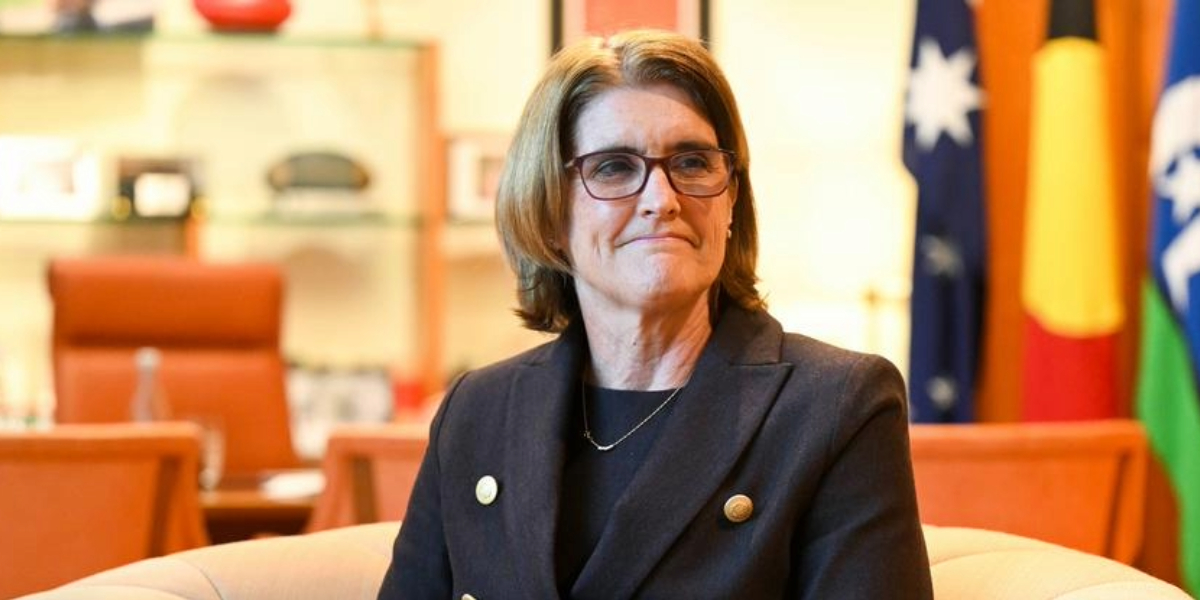New Englander Michele Bullock has formally taken over from Philip Lowe this week, in a historic appointment, as the first woman Governor of the Reserve Bank of Australia.
Born in Melbourne, moving to Armidale at age nine, the self-described proud country girl has devoted her professional life to the RBA and has risen to the top at, Bullock steps into the role with the bank under scrutiny, wrangling the opposing forces of inflation and interest rates at a time when cost of living has been at the forefront of every Australian’s mind.
The New England Times was fortunate enough to have Bullock find the time to answer a few questions about her time at the bank and her governorship, which caps off a 38-year-career dedicated to the RBA.
Bullock lists two achievements as her proudest. One was, she says, “Helping to establish the Bank’s function that oversees and regulates the payments system.”
But perhaps more relevant for the average Australian, especially those with limited eyesight, her other favourite achievement is “Guiding the development of the banknote series that was released between 2016 and 2020, including having a tactile feature on the banknotes,” referring to the tactile dots stamped into the notes that allow the blind to check the denomination independently, without the need for the Bank Note Measure device.
The redesign of the notes was also needed as counterfeiters caught up to the security features that Note Printing Australia pioneered.
“Australia has a very good record on counterfeiting, in large part reflecting the research work and ultimately a decision to print banknotes on polymer rather than paper,” Bullock said.
“Polymer banknotes are more difficult to counterfeit as it is more difficult to print on ‘plastic’. But as the counterfeiting technology has got better we have had to move too.”
“We have a team that analyses counterfeit banknotes to determine how our banknotes might be vulnerable to counterfeiting; we also have scientists that research new security features and assess their value in terms of upgrading the security of our banknotes.”
Bullock was a key player in the New Payments Platform, a system conceived in 2012 that launched in 2018 which resulted in near real-time payments that gave birth to PayID and Osko, and access to banking functions outside banker’s hours.
“I was involved early on in the concept because it was under my leadership that the Bank launched its Strategic Review of Innovation in the Payment System from which the concept of a fast payments system grew,” Bullock says.
“The feedback we got in that consultation was that people wanted faster payments, the ability to make these payments outside of normal business hours, the ability to include more data with a payment and easier addressing of payments.”
“The system has achieved all these things. People can now make electronic payments to one another and to businesses quickly and easily. Using PayID, they can confirm that the person of business they are paying is the legitimate recipient. It also provides near real-time confirmation of payments to the recipient.”
That is behind her. Looking to the future, Bullock has a laundry list of goals for the bank under her leadership, including “to return inflation to target while still maintaining as many of the gains we have had in the labour market as possible; implementing and bedding down new processes for monetary policy decisions; communicating better with the public; (and) leading the Bank staff through some significant structural and cultural change.”
Bullock refers to her Sir Leslie Melville lecture, given at the end of August just after she was selected for the top job, where she hopes to prepare the bank to deal with “the supply shocks, structural changes and uncertainty” that come with adapting to a changing climate that will impact the economy.
Importantly, Bullock stresses that she’d like to focus as much on the operations and culture of the bank itself.
“No one thing is more urgent than another, but two key issues are communication and culture because they are foundational,” Bullock says.
“Communication because that is central to establishing trust with the community and culture because encouraging a culture of respectful debate and challenge is important to achieving our goals.”
Like what you’re reading? Support New England Times by making a small contribution today and help us keep delivering local news paywall-free. Donate now

